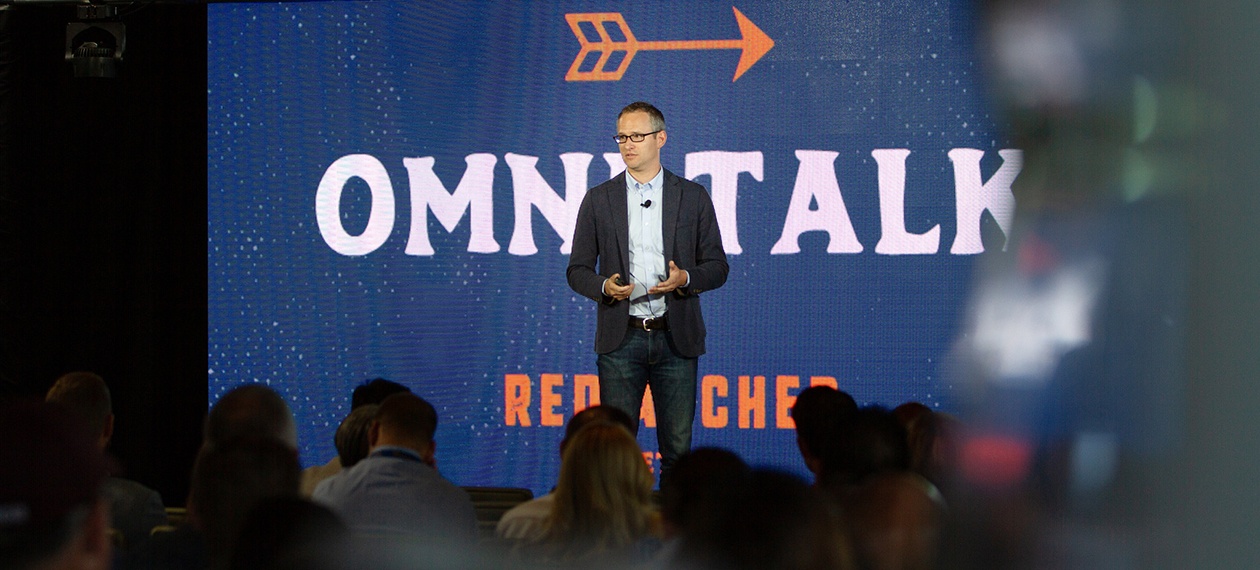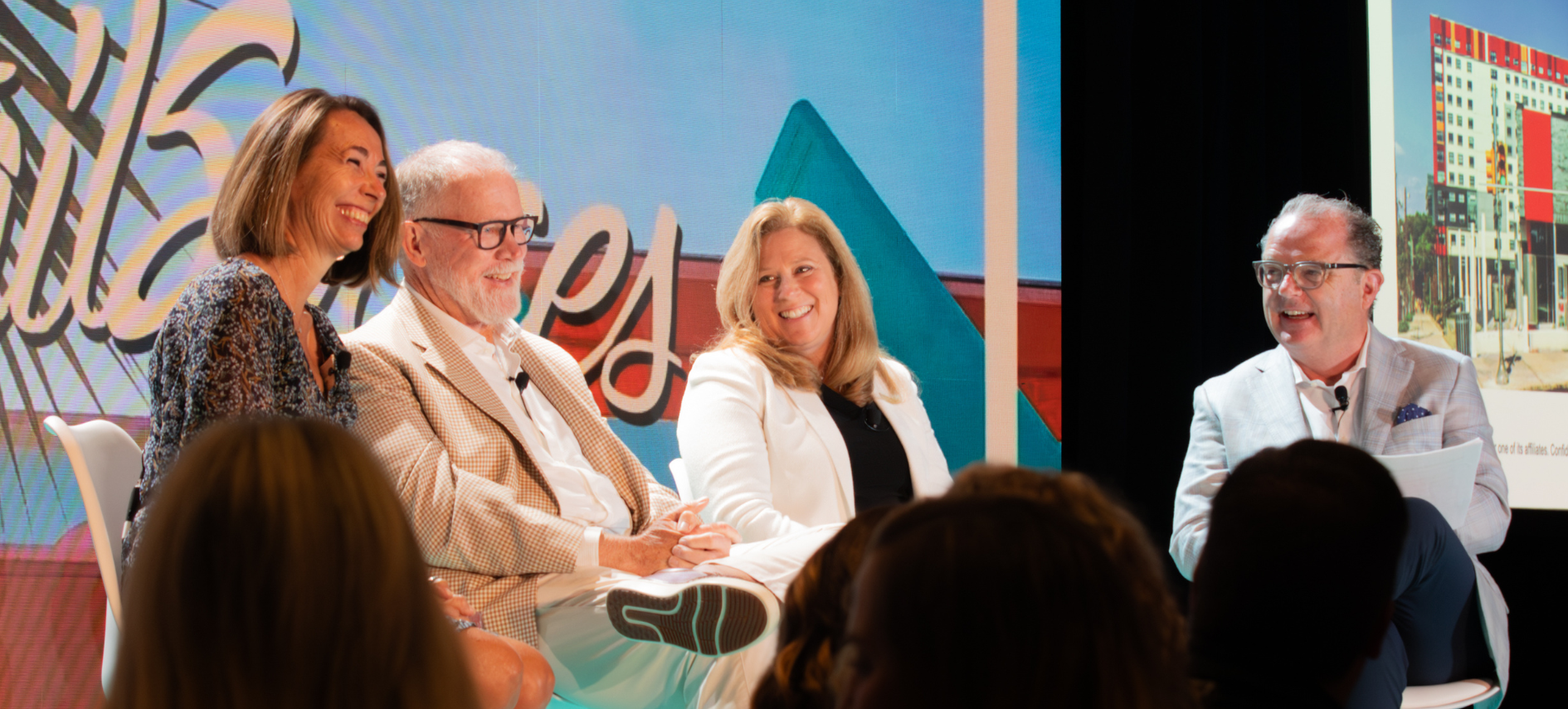During a provocative talk at RetailSpaces ‘18, Chris Walton – publisher of Omni Talk and the former vice president of the Target Store of the Future – proclaimed that the real store of the future will look like “one hell of a swingers’ party.”
Not that he’s ever been to one, of course!
Since leaving Target to launch Omni Talk and Red Archer Retail, one question motivates him each day – “In the future, why will people still come to physical stores to shop.”
“I believe gone are the days where we think about physical retail on one hand and digital retail on the other,” he says. “In reality what has happened is those hands have come together. It's an entirely different context in which we have to think about retail.”
He explained that brick-and-mortar retail as we know it today has been around in its current form – as in, its exact same current form – since the 1960s, and that model has been basically unchallenged until this decade. People still think of e-commerce as this young upstart, but really, e-commerce giants like eBay and Amazon have been around since the 1990s, and they’re towering over traditional brick-and-mortar.
Arousing Curiosity… and Experimentation
So, what does the “store of the future” look like? First of all, Walton actually cautions against using the term “store of the future” because the future of retail won’t be one-size-fits-all. For some, it will mean incremental ideas: the newest initiative, or even just new products, that are future-oriented ideas but that do not fundamentally change the economics of the business. That kind of change requires an entirely new business model, like Amazon launching its cashier-less brick-and-mortar experience Amazon Go.
Amazon Go, in fact, also represents another important component of the store of the future: experimentation. One year ago Amazon Go was still in its concept phase, open only to employees and their friends and family. The company essentially did live experimentation with this controlled customer base, testing different strategies and learning from its mistakes to further improve the customer experience. Now they’re rumored to be planning 3,000 locations in the next three years. Amazon itself spends $22 billion on research and development every year – $6 billion more than any other company, not just its competitors. This is a company that knows the secret to its near-trillion-dollar success is its willingness to experiment.
Which brings us back to that aforementioned swingers’ party. The truth is, if you’re into swingers’ parties you have to be pretty experimental. And as anyone who has ever thrown any kind of party knows, to have a great party you have to have a great guest list.
Walton describes his idea of the perfect “store of the future” swingers’ party guest list, making sure to have just the right mix of established brands, new ideas, and experimental thinking so that there is a little something for everyone to enjoy.
The Guestlist
The first guest is the everyman and everywoman, and that’s Amazon. Not only does Amazon have literally everything, but its visual recognition search function takes the digital retail experience out into the physical world. See someone on the morning train wearing a jacket you really like? Take a picture of it with your phone and, if the product is carried on Amazon (which, most likely, it is), you can see how much it costs, order it right there on the spot, and have it shipped and waiting at your front door for you when you get home that night.
“What that means is the entire physical world starts to become our storefront and our mobile phones start to become the remote controls for our commercial exploration of the physical world,” Walton says, which he admits is a mouthful. Essentially what it boils down to is: The world is your Internet store and your phone is your mouse with which to click on things.
The next guests are the boy and girl next door: Starbucks. What started out as a chain of coffee shops that made the word "Frappuccino" part of the modern lexicon has become a consumer brand with one of the best omnichannel experiences anywhere in the world right now. Their mobile app has been a game-changer, with 30 percent of all payments occurring through the app (to the point that they are considering cash-less stores).
"Starbucks has done a really good job of the 'choose your own adventure' consumer experience," says Walton. You can wait in line and pay the old fashioned way, order your coffee as you're getting into your car and pick it up at the counter on your way to work, or even order from the back of the line and pick it up before the people in front of you even order. Starbucks is beloved by many and certainly known to all, but at a time rife with competition in the premium coffee market, the company has managed to turn technological savvy into fierce brand loyalty.
Next up is the WTF guest, the one that walks in the door and you think to yourself, "Why is that person here? How were they invited?" But a few drinks later find yourself thinking, "Yeah, this could work for me." In retail, that's Bonobos, the e-commerce men's clothing company recently acquired by Walmart for $310 million. Their brick-and-mortar "Guideshops" are all about the customer experience: you can see the clothes, feel the clothes, and fit the clothes, but you can’t take the clothes home. The store is a curated showroom where you receive personalized, one-on-one attention from a "Bonobos Guide." Once you have made your selections you can order them right there on an iPad and they get delivered to your home. Here the act of shopping is divorced from the act of buying, pushing toward a future of purely experiential retail.
No party would be a party without the danger guest, the one who is nothing but trouble and you know it but you can't quit them all the same. And that danger guest here is IKEA.
"I'm convinced if Dante wrote The Inferno in 2018 IKEA would be the seventh circle of Hell," Walton quips.
Here's the thing with IKEA: nothing makes sense; you don't know where you are or how to get out, much less how to find any of the things you’re looking for; the experience of the store itself is completely disorienting; and yet, at the end of it, YOU still have to do all the hard work and heavy lifting, finding the box of heavy furniture you want to buy in their massive stockroom and schlepping it to the cashier. And you love it.
But what if – what if – you could just purchase that item through an app on your phone and have it waiting for you at the front door when you eventually find your way back out?
Yep, you're never going to be able to quit this one.
Finally, we have the Italians, because every party has to have Italians. Walton says they are the perfect analogy for casinos (ever seen the movie Casino?) because casinos are the number one place that still celebrates the joy of going to a physical place.
"It's a very gracious experience," he says. "If you think about a casino, they have an entire role called 'host' because they want you to feel like a welcome guest every time you enter their establishment." It’s not about taking your money – they already know they're going to take your money – it's about making sure you enjoy the experience of having your money taken so that you come back and allow them to take some more. It's about making sure you have a good time.
Keep ‘em Coming Back for More
And that's what the "store of the future" (and this fun little party!) is all about: making sure guests have a good time. The store of the future will not be focused on how much money customers spend in the store on a given day, but about whether they had a good time while they were there. And THAT is what will keep them coming back again and again. The technology will follow, and will further permeate every facet of everyday life, but the future of physical retail is all about the experience.

Posted by
Physical Retail Reimagined.
RetailSpaces is a community for store development and design innovators.
March 29-31, 2026 | San Antonio, TX
Learn More!








Comments